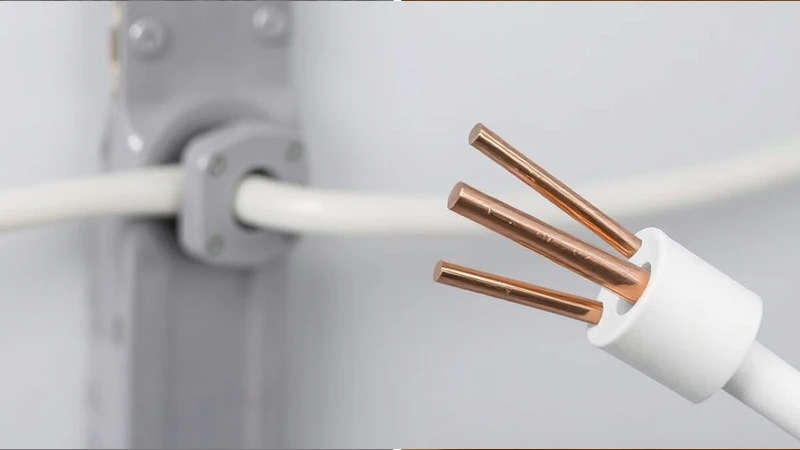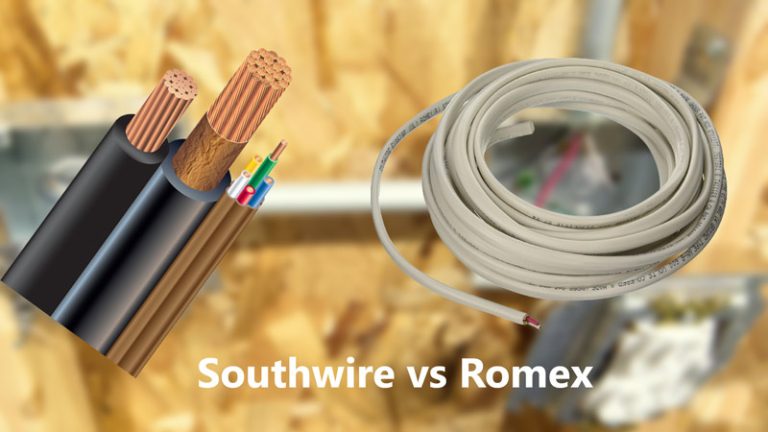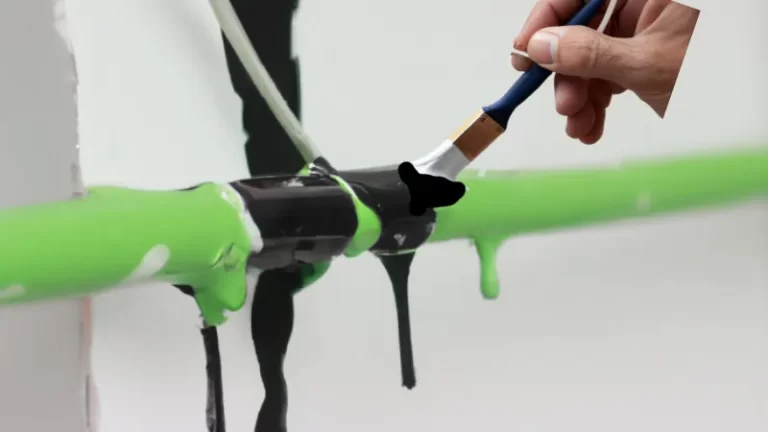White Romex 12/2: Everything You Need to Know
When it comes to wiring projects, White Romex 12/2 is a common term that electricians and DIY enthusiasts encounter. This type of electrical wire is versatile, cost-effective, and widely used in residential and light commercial applications. Understanding its purpose, installation, and characteristics can make any wiring project much easier and safer.
Romex cables are essential to residential wiring because they simplify the connection process. White Romex 12/2 refers to a specific type of non-metallic sheathed cable, with particular characteristics suited for standard wiring jobs. Whether you’re new to wiring or a seasoned electrician, this guide will cover all aspects of White Romex 12/2.
You'll Learn About
What is White Romex 12/2?
White Romex 12/2 is a type of non-metallic sheathed cable used for wiring. It consists of two insulated conductors (hot and neutral) and a ground wire. The sheathing is white, which identifies it for its intended use and application.

The “12” refers to the wire gauge size, which measures the wire’s thickness. The number “2” refers to the two conductors included in the cable. This is an important distinction because different Romex wires are available in various sizes, configurations, and color codes.
How Does White Romex 12/2 Work?
The two wires inside White Romex 12/2 are designed for standard 120-volt circuits. One is the hot wire, carrying the electrical current, and the other is the neutral wire, returning electricity back to the panel. The third wire is the ground, which prevents electrical shock by safely diverting stray current.
The white outer sheath of Romex keeps these wires protected while allowing easy identification during installation. Its flexibility and durability make it ideal for routing through walls, floors, and ceilings.
Common Applications of White Romex 12/2
White Romex 12/2 is used in a variety of residential wiring applications. Its versatility makes it one of the most common cables for homes and light commercial structures.
1. Receptacle Wiring
White Romex 12/2 is commonly used to wire standard wall outlets. It connects the 120-volt power supply to the outlets in living rooms, kitchens, and bedrooms. These wires make it simple to create multiple outlets while maintaining proper code compliance.
2. Lighting Circuits
Lighting applications frequently rely on White Romex 12/2 for their wiring needs. The wiring carries electricity from the circuit panel to ceiling fixtures, wall switches, and other lighting devices. Its affordability and ease of installation make it a top choice for most lighting projects.
3. Kitchen and Appliance Wiring
Kitchens are heavily reliant on efficient and proper wiring. White Romex 12/2 supplies power to standard kitchen outlets and appliances. Examples include refrigerators, dishwashers, and other common kitchen devices that require 120-volt circuits.
4. HVAC Wiring
Heating, ventilation, and air conditioning systems depend on well-installed wiring. White Romex 12/2 is typically used to connect power to HVAC systems in residential homes. It ensures reliable operation without adding unnecessary complexity to the installation.
5. Bathroom Wiring
Bathrooms need safe and compliant wiring due to high humidity levels. White Romex 12/2 can supply power to bathroom outlets, lights, and vent fans. It is waterproof when installed correctly, making it a reliable choice for bathroom wiring.
How to Install White Romex 12/2 Correctly
Installing White Romex 12/2 is an important skill for both professionals and DIYers. Proper installation prevents electrical hazards and ensures reliable performance over time. Here are steps to ensure the proper installation of this versatile cable:
1. Turn Off the Power
Before starting any wiring work, ensure that the power is turned off. Shut off the corresponding circuit breaker at the main electrical panel. Test the circuit with a voltage tester to confirm that no live current is flowing.
2. Plan Your Wire Routing
Plan the path your White Romex 12/2 will follow. Use the shortest and most efficient route between the power supply and the device you are wiring. Avoid sharp turns, excessive tension, or contact with sharp edges.
3. Secure the Romex Properly
Once you’ve routed the cable, secure it using appropriate fasteners. Use staples or straps to ensure it stays in place without damaging the wire insulation. Follow local building code guidelines to ensure safe routing.
4. Connect the Wire to Devices
After routing, strip the wires carefully to expose the necessary amount of wire for connection. Attach the hot (black) wire, neutral (white) wire, and ground (bare copper) wire to their respective terminals on switches, outlets, or appliances.
5. Test Your Installation
After completing the wiring connections, turn the power back on and test the installation. Ensure that all connections are secure and the devices are functioning properly. This final step verifies that everything is installed safely and correctly.
White Romex 12/2 vs. Other Romex Wire Types
While White Romex 12/2 is a popular choice for many applications, other Romex wire types exist. Comparing these will help you select the right wire for the job.
White Romex 12/2 vs. 14/2 Romex
The number “12” in 12/2 refers to a thicker wire, while 14/2 is thinner. A 12-gauge wire carries more current, making 12/2 suitable for heavier-duty appliances and circuits. Conversely, 14/2 is commonly used for smaller circuits, such as lighting.
White Romex 12/2 vs. 10/2 Romex
The 10/2 Romex has a thicker gauge than 12/2, allowing it to handle even heavier loads. It is typically used in circuits with larger appliances or higher power demands, such as electric dryers or ovens.
Code Compliance for White Romex 12/2 Installation
Adhering to electrical codes is vital for ensuring both safety and reliability. The National Electrical Code (NEC) outlines the proper use of White Romex 12/2. Some common points to consider are:
- Minimum wiring clearances.
- Proper grounding requirements.
- Correct wire routing to avoid damage.
Failure to comply with code requirements can lead to inspection delays, safety hazards, and additional expenses.
Safety Tips When Using White Romex 12/2
Working with electricity can be hazardous if safety procedures aren’t followed. Here are a few critical safety tips:
- Always Turn Off the Power: Before performing any installation or maintenance.
- Wear the Proper Gear: Safety goggles and insulated gloves can protect you.
- Check Your Connections Twice: Ensure every wire is connected securely and properly insulated.
- Work with an Experienced Professional if Unsure: Electrical work can be dangerous without proper training.
Following these tips will keep you safe while working with White Romex 12/2.
Did 12 Gauge Romex Used to Be White?
Romex Cable History and Standard Color Changes
Yes, 12 gauge Romex type cable was historically white as its standard color. For many years, white was the conventional and widely recognized color for this type of electrical cable. It was the standard color used to identify 12 gauge Romex in residential wiring systems across North America.
Over time, the industry changed the standard color to improve identification and match new codes. While white was the original standard, changes came to accommodate safety, code compliance, and system recognition. Today, Romex cables are available in multiple colors depending on their gauge and intended application.
The change in color reflects the evolution of wiring systems and safety standards. These standards ensure clarity during installations, repairs, or upgrades by improving visibility and recognition. Although white was common in the past, it is now used less frequently due to these changes.
Why White Was the Original Standard Color for 12 Gauge Romex
White was chosen as the standard color for 12 gauge Romex because it was easily identifiable. The color white became a quick reference for electricians and installers to ensure compatibility with specific wiring needs. It provided a simple way to distinguish it from other types of cables during installation.
This standardization allowed electricians to locate and verify wiring quickly. It also simplified the learning process for those learning the trade or completing routine maintenance. White remained dominant in residential wiring for decades because of its straightforward design and visibility.
However, as the industry grew and codes changed, other colors became necessary for better identification. Different gauges of Romex cables now use other colors to avoid confusion during installation and repairs. Today, many 12 gauge wires are identified with colors like gray, among others.
Changes to Romex Colors Over the Years
Over the years, the color of Romex cables has shifted to promote clarity and compliance. While white was historically the standard, changes came to differentiate wire types by gauge and purpose. For example, newer Romex cables may now be gray, black, or other colors depending on the specific application.
The color changes help electricians distinguish wire types during installation and ensure compliance with modern electrical codes. While the original 12 gauge Romex was white, the gray version has become common in many residential and commercial wiring applications. It is now easier to identify the wire’s purpose and intended use with these changes.
The industry introduced this color coding system to make installations more intuitive. Modern Romex cables adhere to updated safety standards and clearly identify different wire types through color coding. This system prevents mistakes and improves safety for both electricians and homeowners.
What Colors Are Used Today for 12 Gauge Romex?
Today, gray is commonly used as the standard color for 12 gauge Romex cables. This change replaced the traditional white color that was once universal. The shift allows for easier identification, organization, and compliance with updated safety codes and installation practices.
The gray color makes it easier to differentiate 12 gauge wiring from other gauges or types of cables. For example, 14 gauge Romex typically uses a different color scheme than 12 gauge, improving clarity for electricians. These standards ensure that wiring projects can be completed efficiently and safely without errors.
Although white is no longer the most common color for 12 gauge Romex, it may still be found in certain older installations. Modern wiring codes now prefer gray as the go-to color for clear identification and simplicity during projects. This change has become a standard practice in the electrical industry today.
Why the Shift from White to Gray Matters
The switch from white to gray as the most common color had practical reasons behind it. It reduces the chances of confusion during installations or repairs, especially in areas with multiple wiring gauges. Wiring systems must adhere to clear, identifiable codes to ensure proper installation and avoid costly errors.
Gray wires are visually distinct from other wire types, making them easier to identify on the job site. Using different colors allows electricians to locate and troubleshoot circuits quickly without guesswork. This change also helps meet national electrical safety standards and building code requirements.
White may still exist in some older installations, but the shift to gray represents progress in safety and convenience. The change provides a streamlined and efficient way for electricians to follow proper installation practices. The new standards prioritize both safety and usability for residential and commercial wiring projects.
Understanding Romex Color Codes and Their Importance
Romex cables follow specific color codes to make identification easier during electrical installations. These codes are a visual tool that allows electricians to recognize the purpose of each wire quickly. The shift from white to gray for 12 gauge cables is part of these improved color identification standards.
The new codes help ensure that electricians can confidently and efficiently troubleshoot wiring systems. Each color corresponds to a particular gauge or system specification, allowing quick identification during both new builds and repairs. Improved clarity with these colors reduces errors, safety hazards, and time spent diagnosing issues.
Although the historical standard was white, these changes are a reflection of modernization and improvements in the industry. The changes in color help maintain consistency with national codes while improving the overall ease of identification. These standards have become vital for safe, efficient, and accurate electrical work.
FAQs About White Romex 12/2
What is White Romex 12/2 used for?
It is commonly used for general wiring, outlets, lighting, and appliances.
How do I know if I’m using the correct gauge?
Check the wire size numbers on the sheathing. They indicate the gauge.
Can I use White Romex 12/2 outdoors?
No, unless properly protected by conduit. Use outdoor-rated cables instead.
White Romex 12/2 Electrical Wire Overview
| Attribute | Details/Specifications |
|---|---|
| Type of Wire | White Romex 12/2 (Non-Metallic Sheathed Cable) |
| Wire Gauge | 12 AWG (American Wire Gauge) |
| Conductors | 2 Conductors + Ground |
| Color Code | White outer sheath with white and bare wires inside |
| Typical Use | Residential wiring, outlets, lighting circuits, and appliances |
| Voltage Rating | 120/240 Volts depending on application |
| Ampacity | 20 Amps maximum |
| Sheath Material | PVC (Polyvinyl Chloride) coated |
| Applications | Outlets, light switches, wiring in homes, and general power distribution |
| Installation Locations | Dry indoor locations, walls, ceilings, and floors |
| Code Compliance | Meets NEC (National Electrical Code) standards |
This table provides a clear, concise reference for understanding the White Romex 12/2 electrical wire, its features, and its common applications.
White Romex 12-2 is commonly used for general-purpose circuits. For more electrical tips, explore our articles on connecting 10-3 to 10-2 wire and pigtail vs daisy chain outlets. If you’re tackling other projects, like running wire through a top plate, proper planning ensures safety.
Conclusion
White Romex 12/2 is an essential tool in most residential wiring projects. With its affordability, flexibility, and reliability, it’s easy to see why it is so commonly used. Whether you are wiring outlets, appliances, lighting, or other devices, White Romex 12/2 simplifies the process while maintaining safety and compliance.
Before starting any wiring project, ensure that you understand its properties, how to install it, and the relevant safety precautions. When used properly and in compliance with codes, White Romex 12/2 ensures long-lasting, functional, and safe electrical work.



